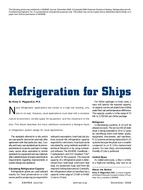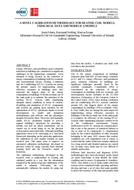An innovative cooling strategy, namely, building-integrated off-peak cooling, was experimentally studied. The approach was designed to shed air conditioning load from peak demand periods by using both thermal and moisture storage in buildings. Presents results of room-scale experiments performed in two side-by-side test cells where the building-integrated off-peak cooling strategy was tested. The experimental setup and configuration established for this purpose are described. Results from three sets of tests are then presented. First, a set of null tests shows that the rooms behave identically when subjected to identical inputs. In the second set of tests, thermal capacitance is added to one of the cells and the room conditions are compared. In the third test, both thermal and moisture capacitance are added to one cell. Results show that both thermal and moisture capacitance are needed to successfully incorporate building-integrated off-peak cooling in hot, humid climates, since humidity is as important as temperature in determining comfort. In general, when this strategy is employed, the required capacity of the air conditioning equipment will not be increased.
KEYWORDS: experiment, buildings, integrated design, off peak, air conditioning, cooling, energy storage, moisture, rooms, testing, thermal capacity, comparing, tropics, subtropics, humidity, temperature, comfort, thermal comfort, load management, cold sources
Citation: ASHRAE Transactions, vol.97, pt. 2, Indianapolis, IN 1991
Product Details
- Published:
- 1991
- File Size:
- 1 file , 700 KB
- Product Code(s):
- D-18032


